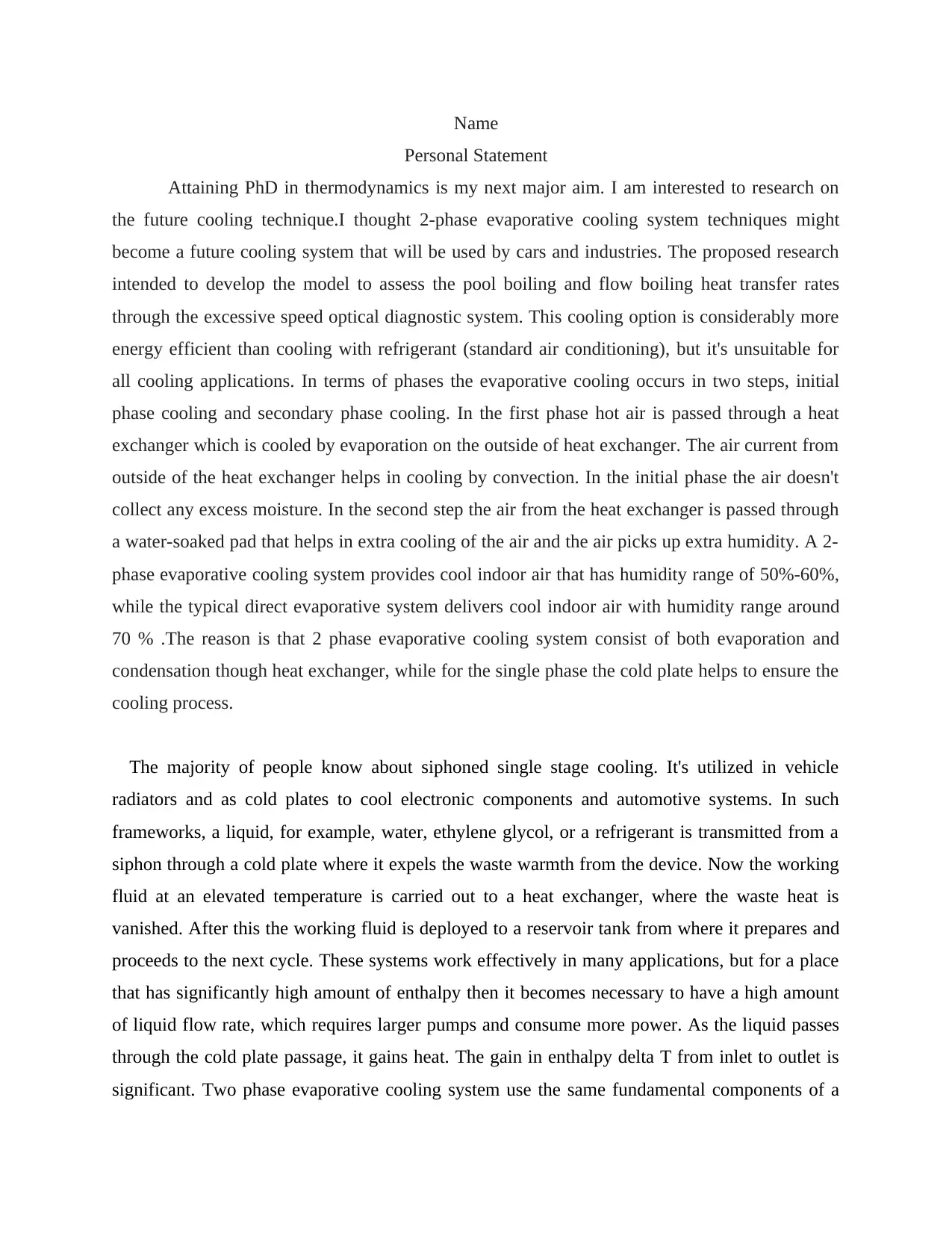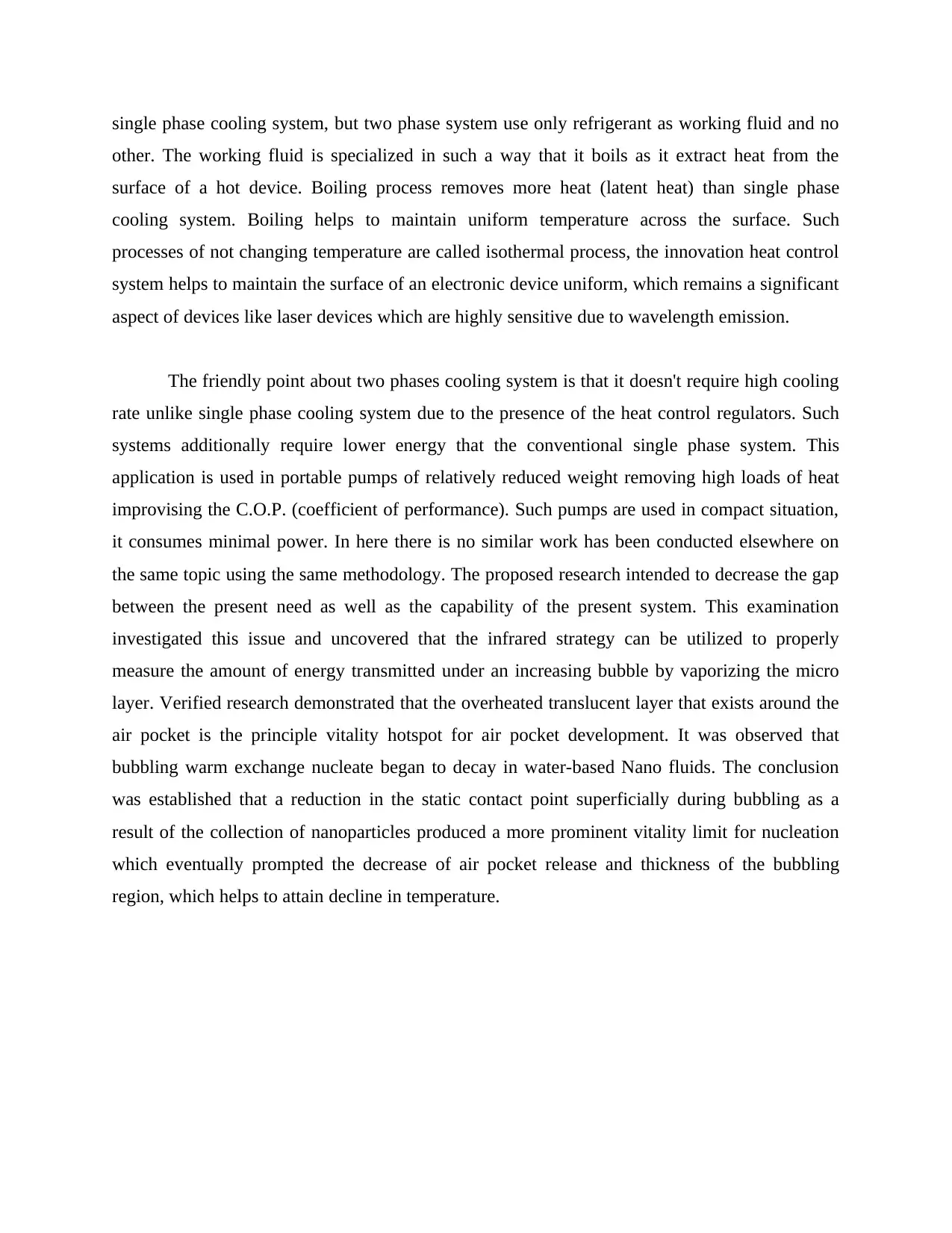Two-Phase Evaporative Cooling Research Proposal - PhD Project
VerifiedAdded on 2022/10/17
|2
|830
|7
Project
AI Summary
This document presents a PhD research proposal focused on two-phase evaporative cooling technologies, with potential applications in the automotive and power generation sectors. The research aims to investigate fundamental heat and mass transfer processes during pool-boiling and flow-boiling using a high-speed optical diagnostic system. The project involves developing accurate models to predict heat flux and surface temperature distributions. The proposed research seeks to bridge the gap between current needs and system capabilities, examining the use of infrared techniques to measure energy transfer during bubble formation. The study also explores the impact of nanofluids on bubble dynamics and heat transfer, aiming to optimize cooling efficiency. The research includes experimental investigations, model development, and industry collaboration to advance the understanding and application of two-phase evaporative cooling systems. This research is conducted at Loughborough University and includes the researcher's career objective, educational background, and project experience.
1 out of 2








![[object Object]](/_next/static/media/star-bottom.7253800d.svg)